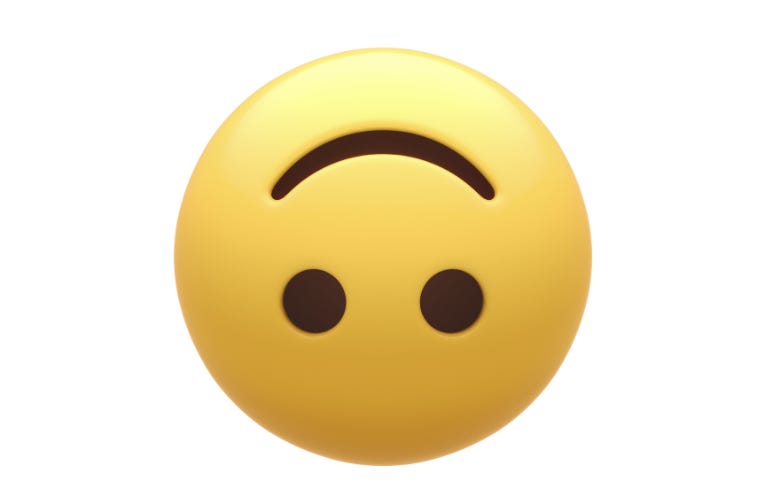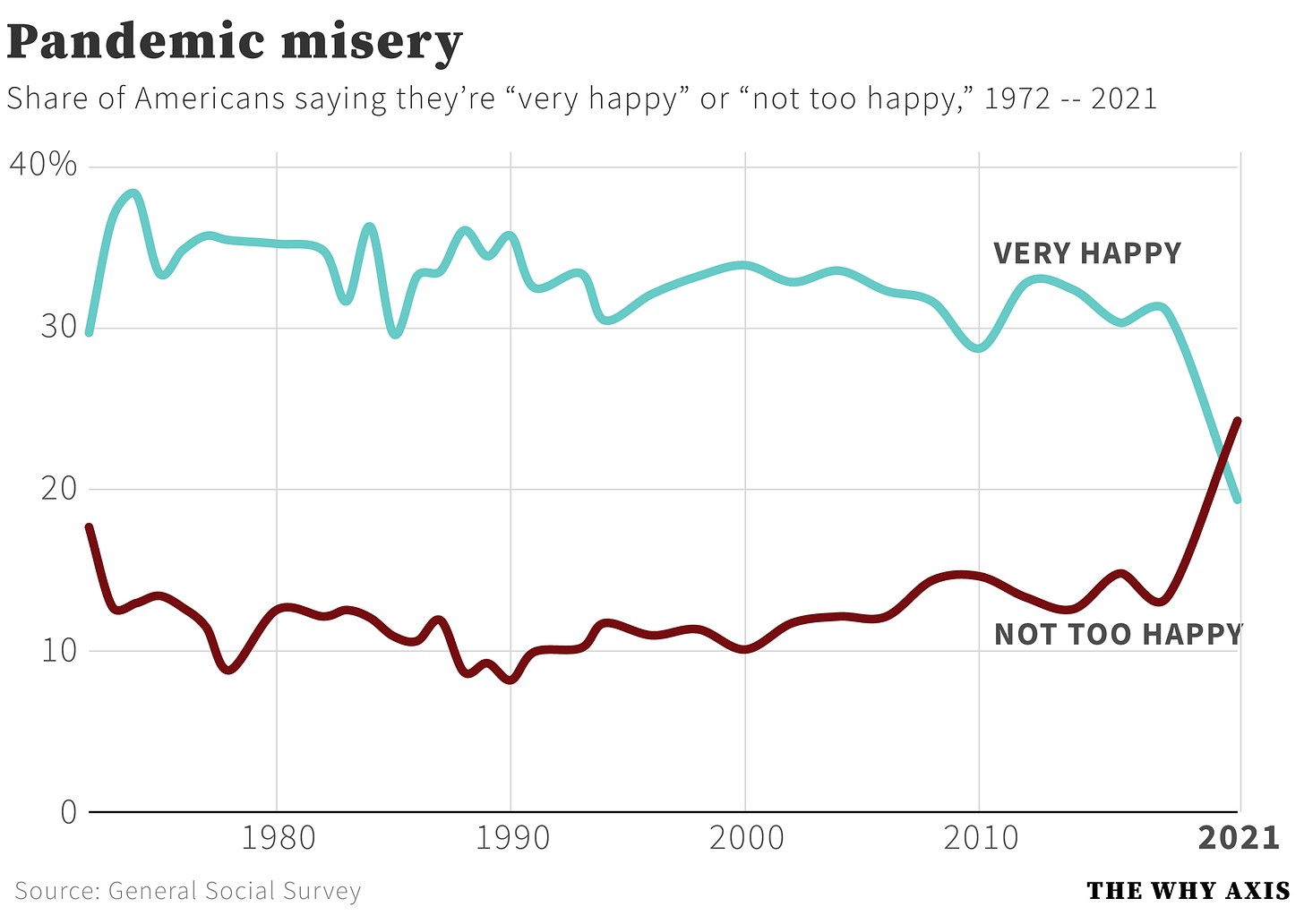New data shows Americans more miserable than we've been in half a century
The latest release from the General Social Survey shows the toll the pandemic has taken on our mental health
When I worked at the Pew Research Center back in the mid-2000s one of our pollsters said something that’s always stuck with me: when it comes to reading survey trends “look for places where the lines cross,” he said. That usually means there’s a big shift going on — support for gay marriage overtaking opposition, for instance, or a politician going underwater on approval.
With that in mind, the latest data on American happiness from the General Social Survey, which just came out this week, is striking:
Since 1972, the survey has asked respondents the following question: “Taken all together, how would you say things are these days--would you say that you are very happy, pretty happy, or not too happy?” Typically, the people who say they’re very happy outnumber the not too happy crowd by about three-to-one. Indeed those numbers have been fairly constant for half a century.
But in 2021 that all changed. The very-happies plummeted from 31 percent of the population in 2018 down to 19, while the not-too-happies surged by a nearly identical amount, from 13 to 24 percent. The balance is made up by the pretty-happies at around 57 percent, who I omitted from the chart because their numbers didn’t change from 2018 to 2021.
For the first time in polling history, in other words, Americans are more likely to say they’re not happy than to say they’re very happy. The obvious driver of this is the pandemic. In 2021 happiness took a major hit across the board — Democrats and Republicans, men and women, rich and poor, healthy and unhealthy people — all reported a decline in the quality of their life.
The pandemic grind — day after day of restrictions, bad news, uncertainty, disruption, threats to health, and everything else — is wearing us down. Consider the chart below:





